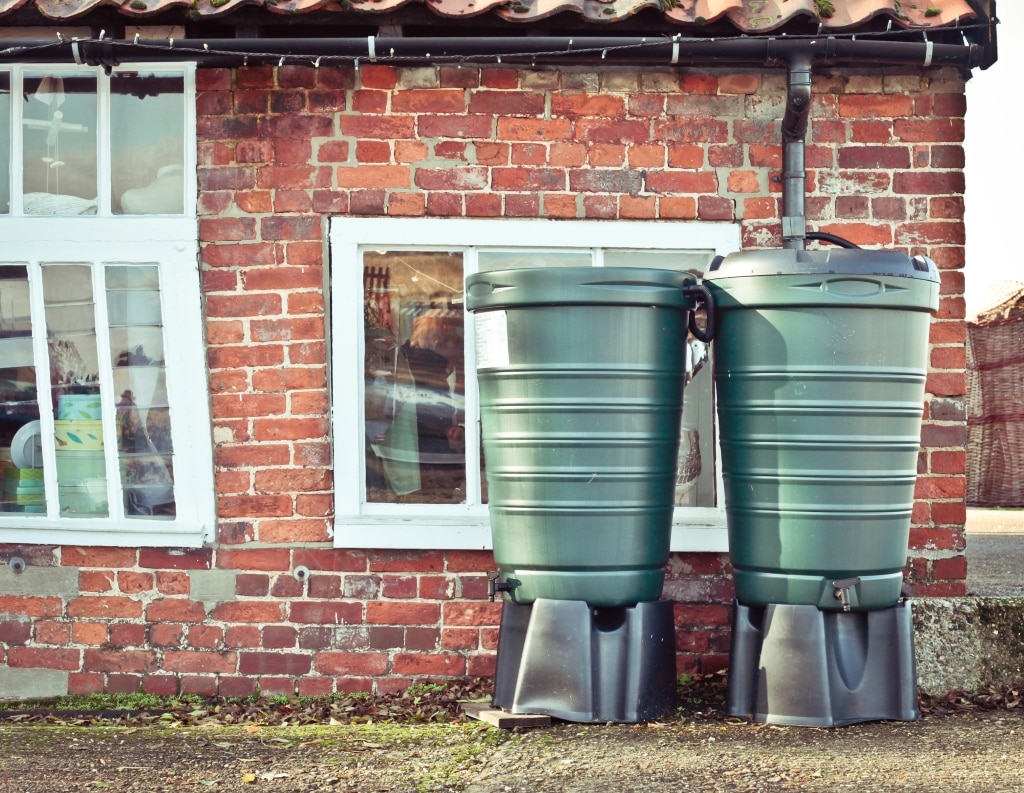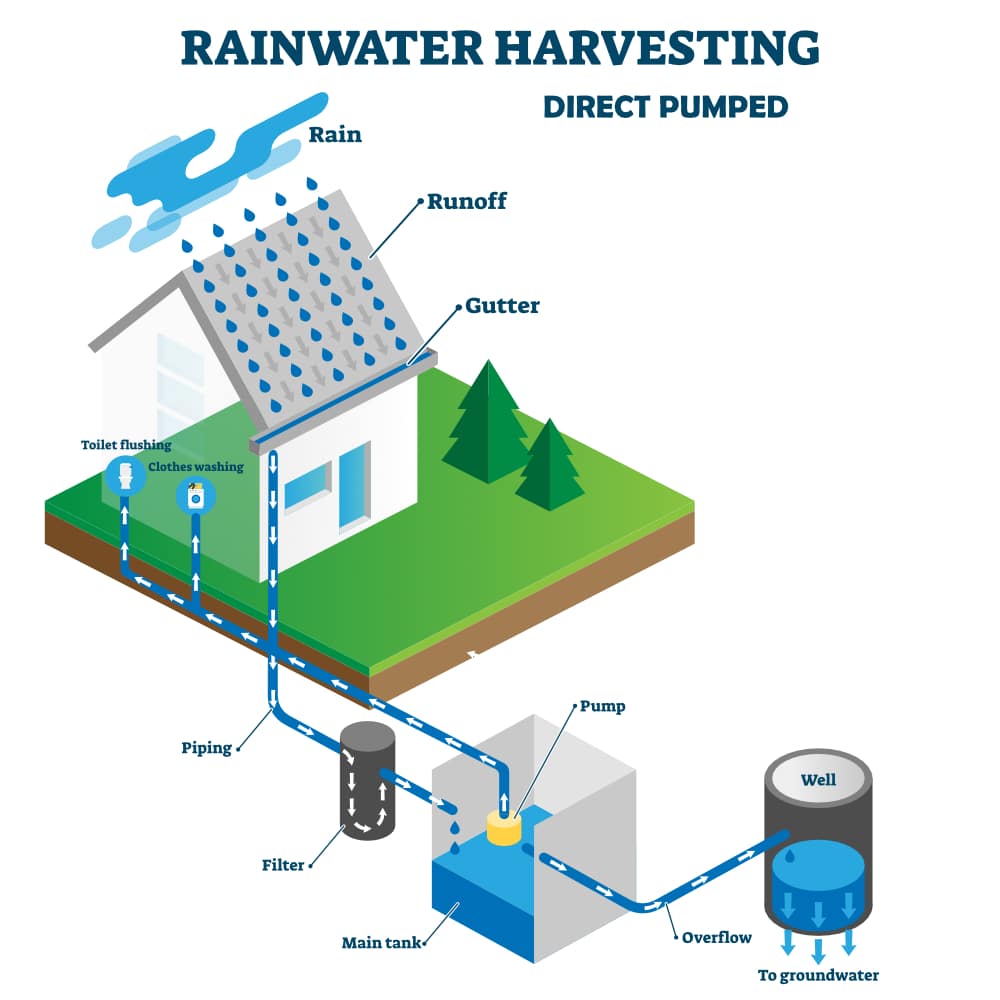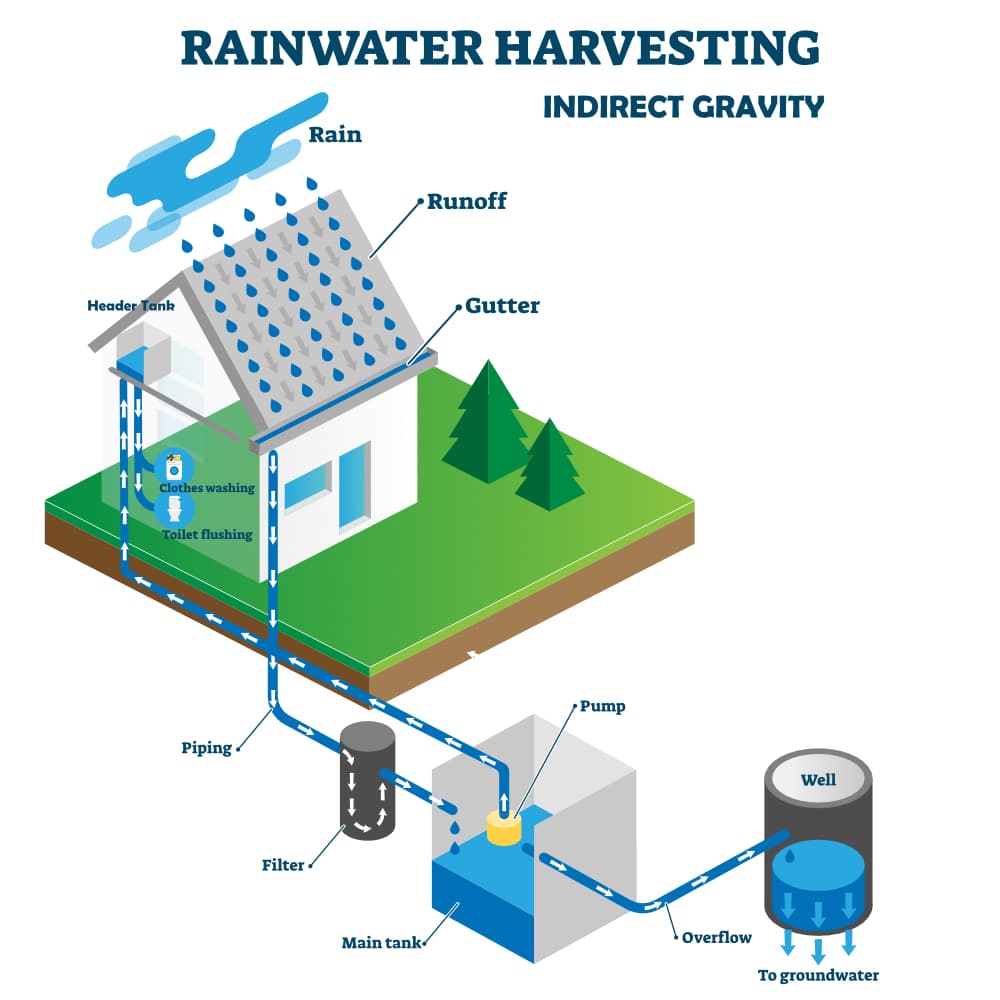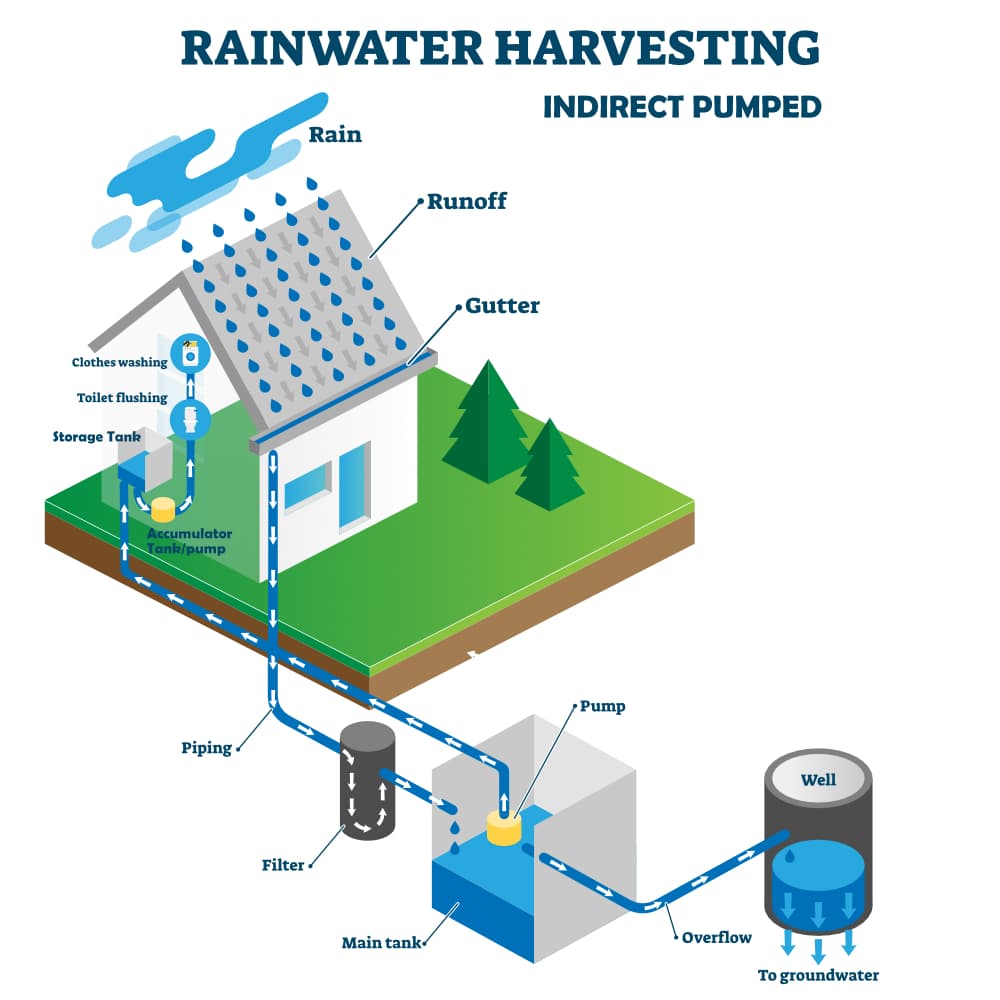
Today, with the rapid development of modern technology, more and more people are concerned about the environment. In addition, many people are worried about the lack of water in the world. As a result, many people are turning to rainwater harvesting to provide a reliable source of water for daily use.
Rainwater can be collected using a rain barrel. A rain barrel has been around for a long time but it was usually used by farms to collect rainwater. Nowadays, people usually get a rainwater harvesting system for their homes.
In this article, we will show you how to harvest water off the grid using a rainwater harvesting system. We will also explain why you should use a rainwater harvesting system and what benefits it has as a water source.
Table of Contents
The Basics of a Rainwater Harvesting System
A rainwater harvesting system collects rainwater that falls on your roof, passing through filters before storing it in underground storage such as large tanks or cisterns. When you need water, you simply turn on the system, and the stored rainwater is pumped into your home’s plumbing system or other areas that needs water.
Although rainwater can be contaminated with pollutants, germs, and chemicals, your municipal water supply might also contain other contaminants that might affect your health. So, your rainwater harvesting system needs to have proper treatment capabilities.
You can use a rainwater harvesting system for other purposes, such as washing your car or washing your clothes. In fact, many people who have rainwater harvesting systems in their homes use them to supplement their water supply or even use them as a primary source of water.
Benefits of a Rainwater Harvesting System
A Rainwater Harvesting System can be a valuable resource for watering your plants and lawn. By collecting rainwater, you can avoid using municipal water that might be contaminated with pollutants and chemicals.
This can help to improve the quality of your water and reduce the risk of water-borne diseases.
The benefits of rainwater harvesting include:
1) Water conservation: A lot of people don’t realize how much water their home uses. A rainwater harvesting system can save up to 75% of the water that would normally be wasted.
2) Quality of Water: You can improve the quality of your drinking water because you have control over what goes into your drinking water; You can rely on a good quality water filter to remove contaminants from the water before it gets to your tank. The filtration system should be simple, effective, and durable as well.
3) Easy to Install & Maintain: Rainwater harvesting systems can be installed on any roof, and they are easy to install, inexpensive, and require little maintenance.
The systems are also very cheap to run: they only cost a few hundred dollars each.
4) Eco-friendly: A rainwater harvesting system does not use a lot of energy to pump water into your home’s plumbing system or other areas that need water. This is one of the easiest water-saving solutions for people and livestock who have little or no access to clean, high-quality water.
5 Types of Rainwater Harvesting Systems
Before buying a rainwater harvesting system, the first thing you should know is that a rainwater harvesting system is not a “one-size-fits-all” solution. This is because different types of systems are suitable for different homes.
Here are some of the common rainwater harvesting systems setup:
Water Butt
The water butt is a basic and low-cost rainwater harvesting system that does not require any special plumbing work to install. Just a simple rainwater collection method with rooftop drainage to the downpipe and gravity feed to the water butt tank. This collection method can be coupled with a simple filtration system to prevent your gutter from clogging and sediments going into the tank.
The tank can come in various shapes and sizes that can collect up to the maximum capacity of the tank. The capacity ranges from 100-2000 liters.
Direct-Pumped

Rainwater is collected in the underground/harvesting tank from your downpipes. Near your harvesting tank, you have a submersible or suction pump to pressurize the water system serving your home water supply.
When your rainwater tank is low, you still have a backup supply from the mains. Either, to fill up your tank or pump directly to the areas that are served with rainwater. It is important to be aware that your water harvesting system does not contaminate the municipal water supply. So, it is best to check with your local contractor to navigate this situation.
Indirect Gravity System

An indirect gravity rainwater tank is a more advanced system compared to a water butt and direct-pumped system. Similarly, rainwater is collected in the underground/harvesting tank from your downpipes. After it runs through a filtration system and is stored, you can pump the water to your header tank (Usually at the highest point located on top of your home or rooftop). The water stored in your header tank then uses gravity to feed the system (toilet and other uses).
When the header tank runs low, the pump will kick in and pump more water from the underground tank to fill it up. In the event, the underground tank is low too, you can top up the header tank with the main supply water.
This system requires you to have 2 storage tanks and reduces stress on your pump as compared to the direct-pumped system.
Indirect Pumped System

An indirect pumped rainwater tank is not much of a difference compared to an indirect gravity feed. In this application, you do not need to position your tank at the highest point. That means you will need a second pump or an accumulator tank to pressurize the water pipes to get on-demand water.
This system might cost you more with an additional pump and tank in place for it to work.
Gravity
If you don’t like the idea of using energy to run pumps, this method might be the solution for you. But the water outlets need to be below the storage tank for this to work. A little plumbing know-how to drain the water off your roof and store it in a tank just beneath it and gravity will do the trick. Of course, this system requires some elevation and room space to work.
Things to Note Before Buying A Rainwater Harvesting System
You should consider the following before buying a rainwater harvesting system:
- The Roof: Different roof types require different rainwater harvesting systems. For example, if you have a flat roof, you can install a rainwater harvesting system with a gentle gradient for water runoff for the gutter and downspout. You can also install a header tank for greater energy savings when your system uses gravity.
If you have a pitched roof, it is already ideal for water runoff and more rainwater collection. - Size of Your Home: You should consider the size of your home and the number of rooms you need water for.
If you have a small home with only a few rooms, you can install a rainwater harvesting system that will be sufficient for your home. - Your Budget: A rainwater harvesting system is an investment, and you should be prepared to pay a lot of money for a system that will save you money in the long run.
- Size of Your Water Tank: The size of the water tank you use to store the rainwater is also important.
Generally speaking, a water storage tank that holds 5000 gallons of water is adequate for most homes. However, if you plan on using your rainwater harvesting system for other purposes, then you will need to get a water storage tank that holds up to 30,000 gallons of water. - The Area You Live In: Different areas have different weather patterns. For example, areas with more rainfall and snowfall will require rainwater harvesting systems with more storage capacity.
- Maintenance: A well-maintained rainwater harvesting system will last longer than a poorly maintained one. You should check your rainwater harvesting system every six months and clean it regularly. This will ensure that you will get the best performance out of your system.
- The Quality of the Materials: You should consider the quality of the materials used in the construction of your rainwater harvesting system. You should use materials that are durable and will not corrode or deteriorate over time.
- Water Purification and Filtration: Water purification can be done in several ways such as distillation, filtration, and reverse osmosis (RO). It is a very effective method of making the water much better than before because after being purified by these processes, it becomes potable water for use since no harmful material will remain leftover like chlorine does which has been used for disinfecting purposes.
Final Note
Water sources are the most important resource on any homestead, especially when living off-grid. All in all, it is essential that you get the most out of your water.
Rainwater harvesting is one of the most effective ways of conserving water, especially when you are living off-grid. It can be done using a variety of different methods and is a good way to ensure that you are getting the most out of your water. If you using rainwater as a primary source of water, get your water tested periodically to ensure your residence’s safety.
In this article, we have covered the different types of rainwater harvesting systems that you can use to collect rainwater and the benefits of using a rainwater harvesting system
Start harvesting your rainwater today and get the most out of your water.
Do check this article out on how to DIY your very own rainwater collection system.

